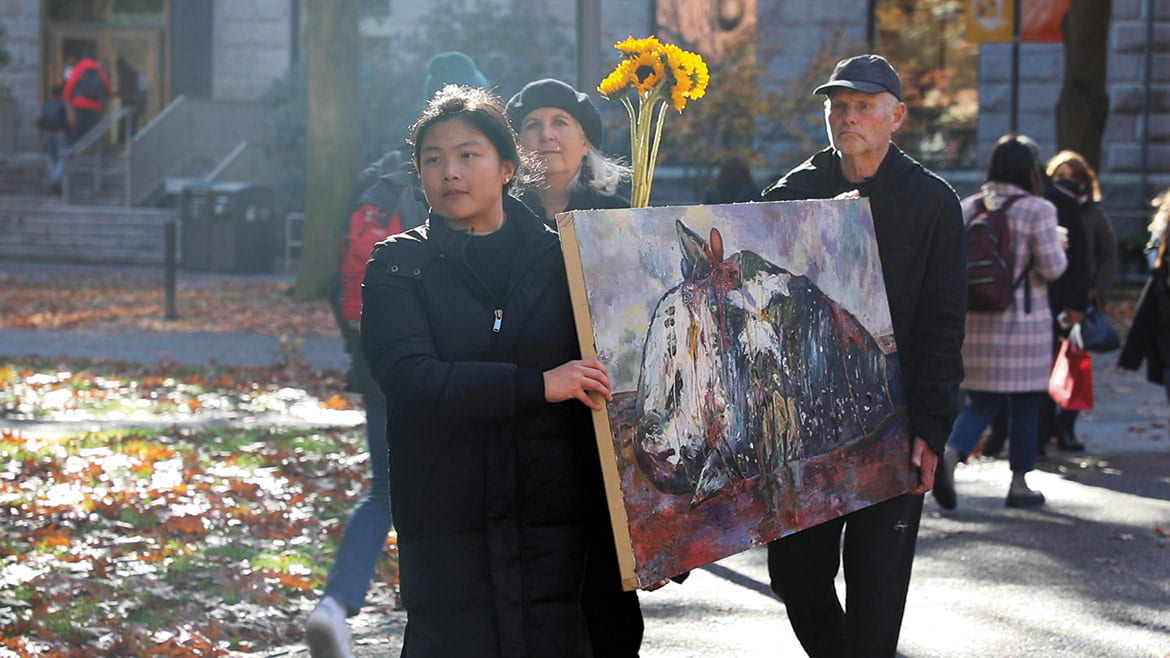
Word & Image
Maisie Luo, Earth Seer
Maisie Luo’s pilgrimage walk. Photo by Caroline Cataldo
By Terry Tempest Williams
Maisie Luo is a watchful artist. She is attentive to the world around her. She feels the pulse of things, from the oceanic movements of North Atlantic right whales to the wings of hummingbirds navigating through flames. When the Harvard community was ritualistically dropping off their weekly COVID tests, Maisie was picking up the blue plastic caps from the kits blindly discarded on the lawn of Harvard Yard: she reimagined them as the lining of the bowerbird’s blue nest she was painting. Little is missed and nothing is wasted on this Earth Seer. Mark Rothko wrote: “A painting is not a picture of an experience; it is an experience.” To stand before Luo’s autobiographical painting, River of Tears, where she paints the flow of her own grief and gratitude for the creatures that surround her, is an experience. How do we live and love with a broken heart? On Monday, November 15, 2021, a crisp, clear day in Cambridge, Maisie Luo, dressed in black, carried her painting of the North Atlantic right whale out of her apartment, down Massachusetts Avenue past the Cambridge Commons and graveyard, across the street, and through the iron gates into Harvard Yard, crowded with students. Her canvas was a seven-foot wooden door turned sideways. No one seemed to notice a whale swimming through the Yard. Not one student stopped, not one inquired as to what this painting of a North Atlantic right whale was doing in the Yard or what this gesture might mean to the artist. The whale continued to “swim” through campus, past the Harvard Museum of Natural History, past the skeleton of an orca hanging visible through the window of the Science Center, to the Divinity School, where Maisie Luo entered the gothic building of Swartz Hall. The whale was carried up two flights of stairs, with the assistance of friends, into Janet Gyatso’s office, which she had offered to Maisie as a studio. Maisie set the painting down and opened the door. The Northern Atlantic right whale, bound by ropes, was greeted by another right whale—a companion painting by Luo, this one unbound and joyously breaching out of the sea. Maisie Luo had ritualistically set a path of memory for future whales to follow as they find their way inland when the seas rise, covering Harvard Yard. Those who witnessed this ceremonial gesture were transformed by the intention of Maisie Luo’s action. We bowed to a beauty that is not optional, but a strategy for survival.Terry Tempest Williams is writer-in-residence at Harvard Divinity School.
Please follow our Commentary Guidelines when engaging in discussion on this site.

